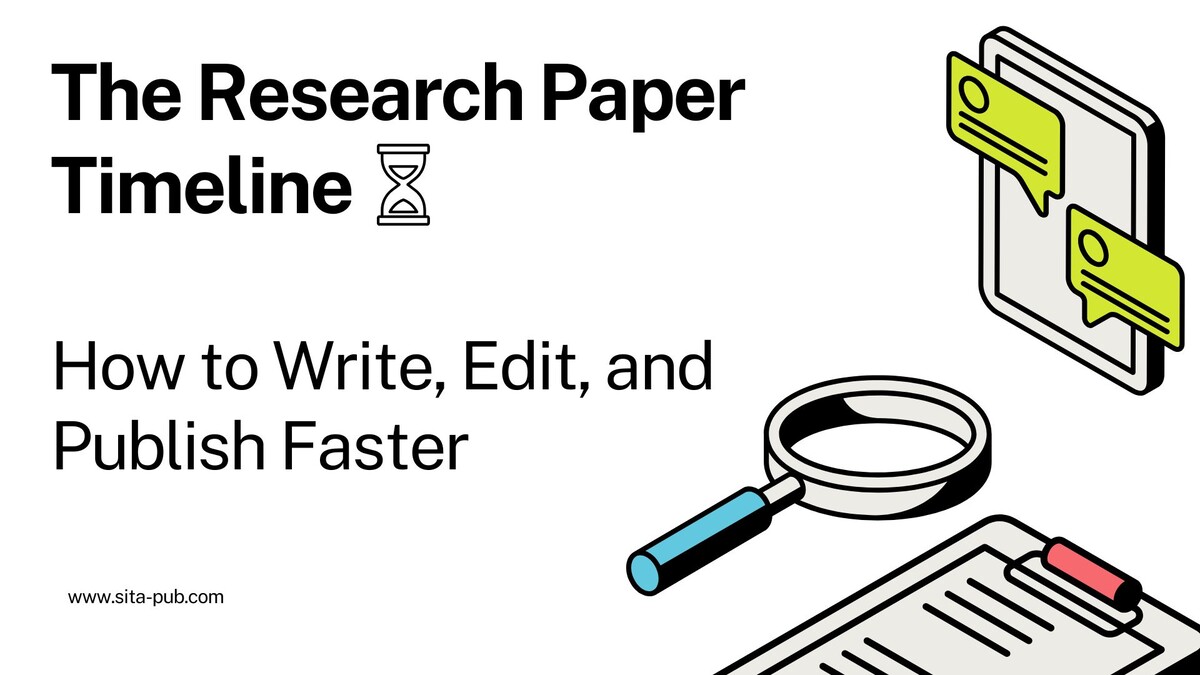The Research Paper Timeline: How to Write, Edit, and Publish Faster


Writing a research paper for publication in a scientific journal is a time-intensive process that can take months to years. From drafting and revising to navigating peer review and final publication, understanding the timeline and optimizing your workflow can help you publish faster without sacrificing quality.
The writing process alone can take two months to over a year, depending on the complexity of the research, data collection, and writing efficiency. However, the full publication process—including journal submission, peer review, and revisions—can extend the timeline to one to two years.
Writing & Research (2-12 months): Depending on the complexity of the study.
Submission to a Journal (1-3 months): Preparing the paper according to journal guidelines.
Peer Review Process (3-12 months): Reviewers evaluate the paper, often requiring revisions.
Revisions & Resubmissions (Varies): If major changes are needed, this step can add months.
Acceptance & Publication (4-12 months): Once accepted, the journal schedules it for publication.
Rejection is Common: Many papers get rejected before acceptance, requiring multiple submissions.
Review Delays: If a reviewer withdraws, finding a new one takes time.
Strict Journal Guidelines: Formatting and submission rules must be followed precisely.
The time required to write a research paper depends on its length and complexity. Below is a general estimate:
Short Paper (2,000–3,000 words): 1–2 months |
Medium Paper (4,000–6,000 words): 3–6 months |
Long Paper (8,000–10,000+ words): 6–12 months |
Proper planning, structured writing, and early feedback can help reduce this timeline.
Since rejection is common in scientific publishing, it is crucial to plan for multiple journal submissions. A well-structured publication timeline helps researchers stay on track and increase their chances of acceptance.
Should it be a full-length original research article, a brief technical report, or a rapid communication?
Choose the right format based on the urgency of publication and journal requirements.
Prepare a list of at least five journals where you will submit your paper.
Expect multiple rejections before final acceptance.
If you aim for a prestigious journal, allow time for rejections and resubmissions.
Some journals require cover letters, authorship agreements, or specific formatting styles.
Formatting and compliance with journal guidelines can take weeks to months.
Some journals allow you to submit an abstract to check if your topic is of interest.
This can save months by avoiding unnecessary submissions.
Rejection Without Peer Review (Fastest): If rejected immediately, submit to the next journal on your list without delay.
Rejection After Peer Review: Revise based on reviewer feedback before submitting to another journal.
Conditional Rejection (Best Case): Address reviewer comments and resubmit quickly to shorten the review cycle.
Acceptance: Complete final revisions, proofing, and formatting requests.
If you need a paper published within a year, you must start the process today.
Plan for at least 3-6 submissions before acceptance.
To streamline this process, consider using a journal publication schedule template to track your progress.
Want to write faster without sacrificing quality? Follow these strategies:
Create a detailed outline with headings and subheadings before writing. This helps you structure your thoughts and avoid writer’s block.
Break your paper into smaller tasks and set daily or weekly word count goals. For example, aim for 500–1,000 words per day.
Don’t perfect each sentence as you write—focus on getting ideas down first, then refine during the editing stage.
Work in focused 25–50 minute intervals with short breaks to maintain concentration and productivity.
Find a quiet workspace, turn off notifications, and use website blockers to stay focused.
Use reference management tools like EndNote, Mendeley, or Zotero to save time when citing sources.
Share a draft with colleagues or mentors before final editing to get constructive feedback and avoid major rewrites.
Publishing a paper requires following specific steps based on your chosen publication method.
Academic Journals: The most credible option but requires peer review.
Scientific Conferences: Allows researchers to present and discuss findings.
Online Research Platforms: Websites that publish papers, though some lack peer review credibility.
General Scientific Magazines: These accept research summaries rather than full papers.
Prepare a Complete Draft: Ensure high-quality writing and data presentation.
Select a Suitable Journal: Consider its Impact Factor and research relevance.
Follow Submission Guidelines: Format the paper according to the journal’s style.
Submit the Paper & Await Peer Review: Reviewers assess quality and credibility.
Revise & Resubmit if Needed: Address reviewer feedback carefully.
Confirm Publication: Ensure the final version meets all requirements.
Publishing research requires strict adherence to ethical standards:
Original Work: The research must be new and unpublished elsewhere.
Data Accuracy: Misrepresenting or manipulating data leads to rejection.
Proper Citation: Avoid plagiarism by citing all sources correctly.
Transparency: Declare any financial support or conflicts of interest.
Scientific Publications: The process can take 6–24 months.
Faster Writing Methods: Smart research techniques and structured writing habits significantly reduce writing time.
By following best practices, researchers can optimize their writing time while ensuring high-quality output that meets journal publishing standards.
Here are some key characteristics of our website:
Transparent Pricing

Timely Delivery

Quality Assurance

Expert Translators

Positive Reputation and Reviews

Customer Support

Confidentiality and Security

Language Specialization

If you have any questions, inquiries, or would like to learn more about our services, please don't hesitate to reach out to us. Our dedicated team is ready to assist you.